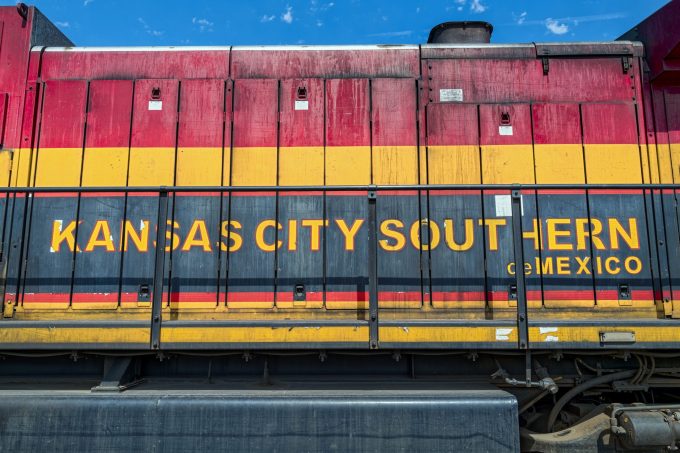Trump tariffs could boost Chinese influence in South-east Asian rail network
The Chinese government’s aim to develop Asian rail networks could be aided by president-elect Trump’s ...
F: MAKING MONEY IN CHINAMAERSK: THE DAY AFTERDHL: NEW DEALGXO: NEW PARTNERSHIPKNIN: MATCHING PREVIOUS LOWSEXPD: VALUE AND LEGAL RISKMAERSK: DOWN SHE GOESVW: PAY CUTFDX: INSIDER BUYXOM: THE PAIN IS FELTUPS: CLOSING DEALSGXO: LOOKING FOR VALUE
F: MAKING MONEY IN CHINAMAERSK: THE DAY AFTERDHL: NEW DEALGXO: NEW PARTNERSHIPKNIN: MATCHING PREVIOUS LOWSEXPD: VALUE AND LEGAL RISKMAERSK: DOWN SHE GOESVW: PAY CUTFDX: INSIDER BUYXOM: THE PAIN IS FELTUPS: CLOSING DEALSGXO: LOOKING FOR VALUE

Amid surging intermodal volumes, it did not take long for a newly minted rail connection from the south-eastern US to Mexico and Texas to gain traction.
And a new intermodal service is on the horizon – less than three weeks after Class I railways CSX and Canadian Pacific Kansas City (CPKC) received the go-ahead from the US Surface Transportation Board to acquire sections of the regional lines of Genesee & Wyoming’s Meridian & Bigbee Railroad at Myrtlewood, Alabama.
These stretches of rail allow the pair to connect their networks for an intermodal link between the south-east and Mexico and they intend to have this operational by 1 December.
The first major customer is Schneider, which is looking to market its service as a faster and smoother alternative to trucking between the regions, offering a seamless and efficient border crossing, eliminating potential delays.
Jim Filter, EVP and group president of transportation and logistics, said: “This represents a major leap forward in our industry, combining the best-in-class service of two renowned railroads, and it will transform the intermodal landscape.”
Schneider pointed out that CPKC’s proprietary train bridge crossing at Laredo has been the only intermodal service unaffected by border shutdowns.
Intermodal traffic has been on a roll in the US and Mexico this year. In the US, rail traffic in the week ending 9 November was up 4.5% year on year – thanks to intermodal demand. The segment grew 11.7% year on year, whereas carloads were down 3.7%, according to the Association of American Railroads.
This mirrors the longer-term trend this year. For the first 45 weeks of 2024, carload volume was down 3.1% on the same period in 2023, whereas intermodal volumes grew 9%.
In Mexico, the gap was less pronounced: carloads rose 11.8% year on year in week ending 9 November, while intermodal volumes surged 17.7%.
These developments should please advocates of intermodal traffic, who argue that the North American Class I rail carriers have neglected the segment in their pursuit of precision scheduled railroading (PSR), with its heavy emphasis on the operating ratio. Shippers and regulators alike have criticised the rail companies for poor performance, arguing this was the direct result of PSR.
It would seem, though, that rail carriers are not quite ready to handle elevated container traffic. US west coast ports have reported smooth operations with no significant issues in recent months, despite elevated volumes from a combination of importers bringing in their cargo early this year and shifts of flows owing to worries about a shutdown of ports on the US east and Gulf coasts.
However, the rail portion of the equation has been less smooth. Dwell times for containers waiting to be moved by rail to the interior have stretched. At the port of Los Angeles, average rail dwell times reached nearly eight days last week, well above the two-to-four-day window the port usually operates at.
According to ITS Logistics, several other US ports are seeing elevated rail ramp operations. And the pressure is unlikely to abate.
Citing concerns about a new east coast port strike in January, as well as a desire to bring in cargo ahead of tariffs mooted by the incoming Trump administration, the Port Tracker, a monthly index produced by the National Retail Federation and maritime consultancy Hackett Associates, predicts increased volumes.
It estimates imports of 2.13m teu for October, up 3.7% year on year, followed by a 13.6% surge in November.
Which suggests that rail carriers may be struggling to cope.
Comment on this article